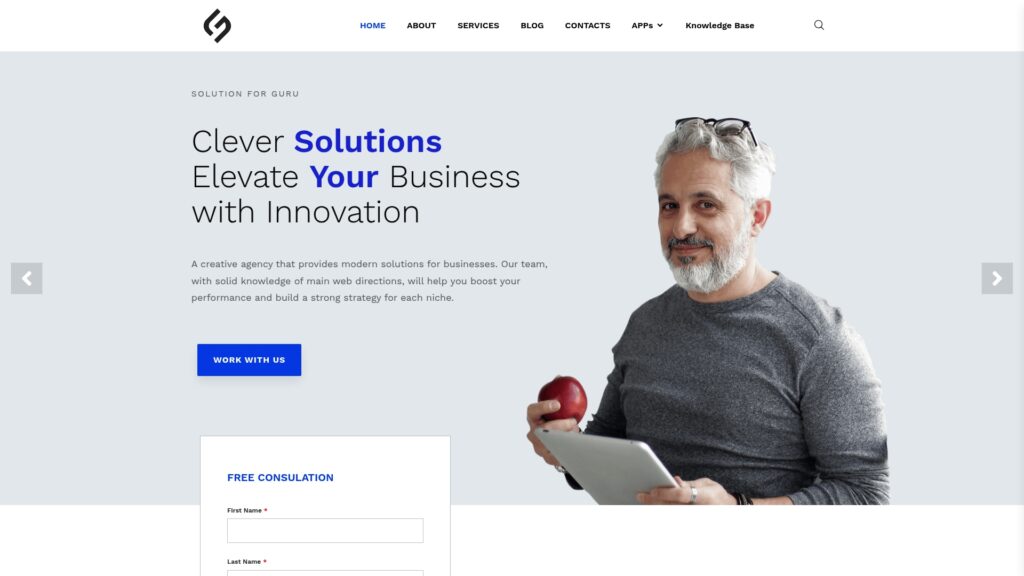How CRM Integrations Create a Unified Customer View?

In today’s fragmented digital landscape, businesses interact with customers across dozens of touchpoints—email, social media, phone calls, websites, and mobile apps. Consequently, customer data becomes scattered across multiple systems, creating silos that prevent organizations from understanding their customers holistically. However, CRM integrations offer a powerful solution by consolidating information from various sources into a single, comprehensive customer profile. This article explores how integrating your CRM with other business systems transforms disconnected data points into actionable intelligence, ultimately enabling personalized experiences and data-driven decision-making.
Table of Contents
- Quick Summary
- What is a Unified Customer View and How Does It Relate to CRM?
- Why Do Businesses Need CRM Integrations for Customer Data?
- How Do CRM Integrations Break Down Data Silos?
- Which Systems Should You Integrate with Your CRM?
- What Are the Key Benefits of a Unified Customer View?
- How Does Salesforce CRM Enable Unified Customer Views?
- How Does Pipedrive CRM Facilitate Customer Data Integration?
- How Does Bigin by Zoho CRM Support Small Business Integration?
- How Does Zoho CRM Create Comprehensive Customer Profiles?
- How Does Creatio CRM Unify Customer Data Through No-Code Integration?
- How Do These CRM Platforms Compare for Creating Unified Customer Views?
- How Can You Measure the Success of Your Unified Customer View?
- Summing up
- Frequently Asked Questions
- Benefits of Cooperation with Solution for Guru Company
Quick Summary
CRM integrations consolidate customer data from multiple sources into a unified view, enabling businesses to deliver personalized experiences and make informed decisions. By connecting platforms like Salesforce CRM, Pipedrive CRM, Bigin by Zoho CRM, Zoho CRM, and Creatio CRM with marketing automation, e-commerce, customer support, and analytics tools, organizations eliminate data silos and gain real-time visibility into customer interactions. This comprehensive approach improves sales efficiency, enhances customer satisfaction, and drives revenue growth through better targeting and engagement strategies.
What is a Unified Customer View and How Does It Relate to CRM?
A unified customer view represents a complete, consolidated profile of each customer by aggregating data from every touchpoint and interaction across your organization. Rather than viewing customers through fragmented lenses – sales knows purchase history, marketing understands campaign engagement, and support sees ticket records – a unified view combines these perspectives into one comprehensive record.
Furthermore, this holistic approach connects behavioral data, transactional information, communication history, preferences, and demographic details into a single source of truth. When implemented effectively, every department accesses the same current information, eliminating contradictions and ensuring consistent customer experiences.
CRM systems serve as the natural foundation for unified customer views because they’re specifically designed to manage customer relationships. Modern CRMs don’t just store contact information; they orchestrate data flows between disparate systems, normalize information formats, and present insights in actionable formats. Moreover, CRMs provide the infrastructure to track customer journeys across channels, analyze patterns, and trigger appropriate responses based on comprehensive profiles.
The relationship between CRM and unified customer views is symbiotic. While the CRM provides the technical framework and storage capabilities, integrations with other systems supply the diverse data streams that make the view truly comprehensive. Without these connections, even the most sophisticated CRM contains only partial information, limiting its strategic value.
Why Do Businesses Need CRM Integrations for Customer Data?
Modern customers expect seamless experiences regardless of how they interact with your business. Nevertheless, most organizations operate with disconnected systems where customer service representatives can’t see recent purchases, sales teams lack visibility into support issues, and marketing campaigns ignore actual product usage patterns. This fragmentation creates frustrating experiences and missed opportunities.
Additionally, manual data entry between systems wastes countless hours while introducing errors that corrupt customer records. Sales representatives spend valuable time copying information from emails to CRM records, support teams duplicate customer details already stored elsewhere, and marketing teams export lists manually to send campaigns. These inefficiencies compound as businesses grow and customer interactions multiply.
CRM integrations address these challenges by automatically synchronizing data across platforms in real-time. When a customer updates their email address on your website, that change instantly reflects in your CRM, email marketing platform, and support system. Similarly, when someone makes a purchase, that transaction immediately appears in their CRM profile, triggering appropriate follow-up workflows and updating segmentation criteria.
Furthermore, integrated systems enable sophisticated analytics that would be impossible with isolated data. You can correlate marketing campaign responses with actual revenue, identify which support issues predict customer churn, and determine which products customers buy together. These insights drive strategic decisions that significantly impact business outcomes.
| Business Challenge | Impact Without Integration | Solution Through CRM Integration |
| Data Silos | Incomplete customer understanding, inconsistent experiences | Centralized information accessible across departments |
| Manual Data Entry | Wasted time, frequent errors, delayed updates | Automatic synchronization, real-time accuracy |
| Limited Analytics | Surface-level insights, missed patterns | Cross-system correlation, predictive modeling |
| Inconsistent Communication | Duplicate messages, irrelevant content | Coordinated outreach based on complete history |
| Poor Personalization | Generic experiences, low engagement | Tailored interactions based on comprehensive profiles |
How Do CRM Integrations Break Down Data Silos?
Data silos emerge when different departments use separate systems that don’t communicate with each other. Marketing might use one platform for email campaigns, sales relies on a CRM for pipeline management, customer service operates ticketing software, and finance maintains accounting systems—all containing overlapping but inconsistent customer information. Consequently, no single team possesses a complete picture of customer relationships.
Breaking down these silos requires strategic integration planning that maps data flows between systems. First, organizations must identify which information should synchronize bidirectionally versus which should flow in only one direction. For instance, customer contact details typically synchronize across all platforms, whereas detailed purchase transactions might flow from e-commerce systems into the CRM without reverse updates.
Moreover, successful integration strategies establish the CRM as the master record for customer data, making it the authoritative source that other systems reference. When conflicts arise – such as different email addresses stored in multiple platforms – predefined rules determine which system’s data takes precedence based on factors like timestamp or data quality scores.
Integration tools and middleware platforms facilitate these connections without requiring extensive custom development. Modern APIs enable systems to communicate standardized data formats, while integration platforms like Zapier, Make, or native CRM connectors provide pre-built templates for common synchronization scenarios. These solutions dramatically reduce implementation time and technical complexity.
Additionally, real-time synchronization ensures that data remains current across all platforms. Rather than batch updates that occur daily or weekly, modern integrations push changes instantly, guaranteeing that every team member sees the latest information. This immediacy proves particularly valuable for time-sensitive scenarios like sales follow-ups or customer service escalations.
Which Systems Should You Integrate with Your CRM?
The specific systems you connect depend on your business model and customer journey, though several categories provide universal value. Marketing automation platforms represent perhaps the most critical integration, enabling sophisticated campaign orchestration based on CRM data while feeding engagement metrics back into customer profiles. Platforms like HubSpot, Marketo, Mailchimp, and Pardot sync contact information, track email interactions, and trigger campaigns based on CRM field changes.
Furthermore, e-commerce platforms provide essential transactional data that transforms CRM profiles from simple contact records into comprehensive purchase histories. Integrating Shopify, WooCommerce, Magento, or BigCommerce connections ensures that sales teams understand customer buying patterns, marketing can segment by purchase behavior, and support representatives access order details during service interactions.
Customer support systems like Zendesk, Freshdesk, or ServiceNow integration creates bidirectional visibility where support tickets appear in CRM records and customer context from the CRM enriches support interactions. This connection prevents customers from repeating information, enables support teams to proactively address issues for high-value accounts, and helps sales teams avoid contacting customers during active support problems.
Communication platforms including email clients, phone systems, and messaging apps capture interaction history that would otherwise remain invisible. Integrating Gmail, Outlook, Twilio, Slack, or WhatsApp ensures that every customer conversation automatically logs in the CRM, creating complete communication timelines without manual data entry.
Essential CRM Integrations by Category:
- Marketing: Email marketing platforms, social media management tools, advertising platforms, webinar software, landing page builders
- Sales: Proposal software, electronic signature tools, calendar scheduling, video conferencing, sales intelligence platforms
- Support: Ticketing systems, live chat software, knowledge bases, feedback collection tools, community forums
- Operations: Accounting software, inventory management, project management, document storage, contract management
- Analytics: Business intelligence tools, data warehouses, reporting platforms, attribution software, customer data platforms
What Are the Key Benefits of a Unified Customer View?

Enhanced personalization stands as perhaps the most impactful benefit of unified customer views. When you understand complete customer histories – including purchases, preferences, support interactions, and engagement patterns – you can tailor every communication and offer to individual needs. Marketing messages reference specific products customers own, sales conversations acknowledge previous discussions, and support interactions build upon prior resolutions. This relevance dramatically improves response rates and customer satisfaction.
Additionally, unified views significantly improve operational efficiency across departments. Sales representatives spend less time researching accounts and more time building relationships because comprehensive information appears instantly. Marketing teams segment audiences precisely without manual list management, and support agents resolve issues faster with immediate access to account context. These time savings compound across hundreds or thousands of daily interactions.
Moreover, predictive analytics become possible when you correlate data across systems. By analyzing patterns in unified customer profiles, you can identify early warning signs of churn, predict which leads will convert, forecast customer lifetime value, and recommend optimal next actions. These insights enable proactive strategies rather than reactive responses, fundamentally shifting your competitive position.
Customer satisfaction improves measurably when organizations eliminate contradictions and provide consistent experiences. Customers notice when they don’t need to repeat information, when offers align with their actual needs, and when different departments clearly communicate with each other. This coherence builds trust and loyalty that translates directly into retention and advocacy.
Furthermore, unified views reveal cross-selling and upselling opportunities that remain invisible in siloed systems. When you see which products customers use together, which services complemented previous purchases, and what natural progression patterns exist, you can recommend additional offerings with confidence and relevance. This strategic approach to revenue expansion feels helpful rather than pushy.
Measurable Impact of Unified Customer Views:
- Revenue Growth: 15-25% increase in sales productivity, 10-20% improvement in conversion rates, 20-30% higher cross-sell success
- Customer Retention: 10-15% reduction in churn, 25-35% faster issue resolution, 30-40% improvement in customer satisfaction scores
- Operational Efficiency: 20-30% reduction in data entry time, 40-50% decrease in duplicate records, 15-25% improvement in forecast accuracy
- Marketing Effectiveness: 25-35% higher email engagement, 20-30% better campaign ROI, 30-40% more accurate segmentation
How Does Salesforce CRM Enable Unified Customer Views?

Salesforce CRM dominates the enterprise CRM market largely due to its comprehensive integration capabilities and unified customer view functionality. At its core, Salesforce organizes customer data around a 360-degree view concept where accounts, contacts, opportunities, cases, and activities interconnect in an intuitive interface that reveals complete relationship histories at a glance.
The platform’s AppExchange marketplace offers thousands of pre-built integrations spanning virtually every business software category. These native connectors enable organizations to link marketing automation, e-commerce, customer service, accounting, and analytics platforms with minimal custom development. Consequently, businesses can rapidly build comprehensive integration ecosystems that feed diverse data streams into unified customer profiles.
Salesforce’s Einstein AI layer enhances unified views by analyzing integrated data to generate insights, predictions, and recommendations. The system identifies patterns across customer interactions, scores leads based on conversion likelihood, predicts opportunity outcomes, and suggests optimal next actions. These intelligent features transform raw integrated data into strategic guidance that improves decision-making across sales, marketing, and service teams.
Moreover, Salesforce’s Customer Data Platform (CDP) capabilities take integration further by resolving customer identities across systems, creating persistent unified profiles even when customers interact through different channels or provide varying contact information. This identity resolution proves particularly valuable for organizations with complex multi-brand or multi-channel operations where customers might engage through various touchpoints.
The platform’s robust API and integration tools like MuleSoft enable custom connections for unique business requirements. When standard connectors don’t meet specific needs, organizations can develop tailored integrations that maintain real-time synchronization while applying custom business logic and data transformations. This flexibility ensures that even organizations with specialized systems can achieve comprehensive unified views through Salesforce CRM.
How Does Pipedrive CRM Facilitate Customer Data Integration?

Pipedrive CRM focuses specifically on sales pipeline management, making it particularly effective at unifying data that directly impacts deal progression and revenue generation. The platform’s visual pipeline interface displays not just opportunity stages but also integrated information from connected systems, providing sales representatives with comprehensive context without navigating multiple applications.
The system’s Marketplace offers integrations with popular business tools including email platforms, calendar applications, marketing automation, proposal software, and communication tools. These connections automatically capture sales activities, synchronize contact information, and trigger workflows based on integrated data. For instance, when a prospect opens a proposal generated through integrated software, that engagement automatically logs in Pipedrive CRM and can trigger follow-up tasks or notifications.
Furthermore, Pipedrive CRM excels at email integration that captures complete communication histories within customer records. Native connections with Gmail and Outlook ensure that every email conversation automatically associates with relevant contacts and deals, eliminating manual logging while creating comprehensive interaction timelines. Sales managers gain visibility into team communications without intrusive oversight, enabling coaching based on actual conversation patterns.
Pipedrive CRM’s Workflow Automation feature leverages integrated data to orchestrate sophisticated sales processes. When information synchronizes from connected systems—such as a webinar attendance from marketing automation or a support ticket escalation—conditional workflows trigger appropriate responses like task assignments, follow-up emails, or deal stage progressions. These automated processes ensure consistent handling of integrated information across the sales organization.
Additionally, the platform’s LeadBooster add-on integrates website visitor tracking and lead capture forms directly into the CRM, creating unified views that span from initial anonymous website visits through completed purchases. This end-to-end visibility enables sales teams to understand prospect interests and engagement levels before first contact, facilitating more relevant and effective conversations.
How Does Bigin by Zoho CRM Support Small Business Integration?

Bigin by Zoho CRM specifically addresses small business needs by offering simplified integration capabilities that don’t require extensive technical expertise or resources. The platform provides essential connections to popular small business tools through straightforward configuration interfaces that guide users through integration setup without requiring API knowledge or developer assistance.
The system’s native integrations include email platforms, phone systems, payment processors, and document storage solutions commonly used by small businesses. These pre-built connectors enable organizations to quickly unify customer data from critical systems, creating comprehensive views despite limited IT resources. For example, integrating payment platforms like Stripe or PayPal automatically associates transactions with customer records, providing sales context that informs follow-up strategies.
Moreover, Bigin by Zoho CRM integrates seamlessly with other Zoho applications including Zoho Books for accounting, Zoho Campaigns for email marketing, and Zoho Desk for customer support. This ecosystem approach enables small businesses to build comprehensive business management solutions where customer data flows freely between applications, creating unified views without complex third-party integrations.
Bigin by Zoho CRM’s telephony integrations prove particularly valuable for small sales teams by automatically logging call activities, recording conversations, and creating tasks from phone interactions. These features ensure that telephone communication—often the primary sales channel for small businesses—integrates fully into customer records, preventing information loss and maintaining complete interaction histories.
The platform’s web forms and pipeline management tools integrate with websites and marketing platforms to capture leads directly into the CRM where they immediately connect with relevant context from other systems. This streamlined lead-to-customer journey creates unified views from the earliest engagement stages, enabling small businesses to deliver personalized experiences typically associated with larger enterprises.
How Does Zoho CRM Create Comprehensive Customer Profiles?

Zoho CRM offers extensive integration capabilities that enable organizations to construct detailed unified customer views by connecting dozens of business applications within and beyond the Zoho ecosystem. The platform’s Canvas feature allows businesses to customize the customer profile interface, arranging integrated data from various systems into logical layouts that present comprehensive information effectively.
The system’s native integrations span marketing automation, social media monitoring, customer support, e-commerce, accounting, and analytics platforms. These connections feed diverse data types into customer records—social media interactions, website behaviors, purchase transactions, support cases, and financial information—creating multidimensional profiles that reveal customer relationships from every relevant angle.
Furthermore, Zoho CRM’s Blueprint feature enables process automation based on integrated data from connected systems. Organizations can design sophisticated workflows that trigger specific actions when integrated information meets defined criteria. For instance, when e-commerce data shows a high-value purchase, workflows might automatically assign account management resources, trigger personalized onboarding campaigns, or create priority support entitlements.
Zoho CRM’s Zia AI assistant enhances unified views by analyzing integrated data to surface relevant insights, predict outcomes, and recommend actions. The system identifies which customers likely need attention, suggests optimal contact times based on engagement patterns, and highlights anomalies in integrated data that might indicate opportunities or risks. These intelligent features help teams extract maximum value from comprehensive integrated information.
Additionally, Zoho CRM’s Analytics module correlates data across integrated systems to generate sophisticated reports that would be impossible with isolated information. Organizations can analyze how marketing campaigns influence sales pipeline velocity, determine which support issues correlate with customer retention, and identify which product combinations predict expansion opportunities. These cross-system insights drive strategic decisions that significantly impact business outcomes.
How Does Creatio CRM Unify Customer Data Through No-Code Integration?

Creatio CRM distinguishes itself through comprehensive no-code and low-code development capabilities that enable business users to create integrations and unified customer views without extensive technical expertise. The platform’s visual development tools allow organizations to design integration workflows, data mapping, and synchronization rules through intuitive graphical interfaces rather than complex programming.
The system’s pre-built connectors for popular business applications provide starting points that users can customize through drag-and-drop configuration. These integrations span marketing platforms, e-commerce systems, communication tools, and analytics applications, enabling organizations to rapidly build comprehensive integration ecosystems. Moreover, when specialized requirements emerge, the same visual tools enable users to develop custom connections without engaging developers.
Creatio CRM’s process automation capabilities leverage unified customer data to orchestrate sophisticated business workflows across integrated systems. Organizations design end-to-end processes that span multiple applications—for instance, lead nurturing campaigns that incorporate email marketing, website tracking, sales activities, and support interactions—all coordinated through unified customer profiles maintained in Creatio CRM.
Furthermore, the platform’s intelligent business process management features analyze integrated data to optimize workflows over time. The system identifies bottlenecks, highlights inefficiencies, and suggests improvements based on actual performance patterns observed across unified customer views. This continuous improvement approach ensures that integration investments deliver increasing value as organizations refine their processes.
Creatio CRM’s 360-degree customer view interface presents integrated data in customizable layouts that reflect specific business requirements. Users configure which information from integrated systems appears prominently, how related records connect visually, and which insights and recommendations the interface highlights. This flexibility ensures that unified views serve actual workflow needs rather than forcing teams to adapt to rigid structures.
How Do These CRM Platforms Compare for Creating Unified Customer Views?
Selecting the right CRM platform for unified customer view implementation requires understanding how each system approaches integration capabilities, data consolidation, and profile presentation. The following comprehensive comparison examines Salesforce CRM, Pipedrive CRM, Bigin by Zoho CRM, Zoho CRM, and Creatio CRM across critical dimensions that impact integration success.
How Can You Measure the Success of Your Unified Customer View?

Quantifying integration success requires establishing baseline metrics before implementation and tracking improvements across operational efficiency, customer experience, and business outcomes. Data quality metrics provide foundational measurements including duplicate record rates, incomplete profile percentages, and data accuracy scores. Successful integrations typically reduce duplicates by 60-80%, decrease incomplete records by 40-60%, and improve accuracy scores by 30-50% within six months.
Furthermore, operational efficiency measurements demonstrate time savings and productivity gains from unified views. Track metrics like average time to access customer information, manual data entry hours per week, and cross-system navigation frequency. Organizations commonly report 40-60% reductions in information lookup time and 50-70% decreases in manual data entry after implementing comprehensive integrations.
Customer experience indicators reveal whether unified views translate into improved interactions and satisfaction. Monitor metrics including first-contact resolution rates, average handling times, customer satisfaction scores, and Net Promoter Scores. Successful implementations typically improve first-contact resolution by 20-35%, reduce handling times by 15-25%, and increase satisfaction scores by 10-20 points.
Additionally, business outcome measurements connect integration investments to revenue and profitability impacts. Track conversion rates, deal cycle lengths, customer lifetime value, retention rates, and revenue per customer. Organizations frequently observe 15-30% improvements in conversion rates, 20-35% reductions in sales cycles, and 10-25% increases in customer lifetime value following integration initiatives.
User adoption metrics ensure that teams actually leverage unified views rather than reverting to previous workarounds. Monitor login frequencies, feature utilization rates, mobile access patterns, and data entry compliance. High adoption—typically above 80% daily active usage—proves essential for realizing integration benefits, while low adoption indicates training gaps or usability issues requiring attention.
Key Performance Indicators for Unified Customer Views:
- Data Quality KPIs
- Duplicate record rate (target: <2%)
- Profile completion percentage (target: >90%)
- Data accuracy score (target: >95%)
- Cross-system consistency rate (target: >98%)
- Efficiency KPIs
- Time to access customer information (target: <10 seconds)
- Manual data entry hours per week (target: <5% of previous baseline)
- System switching frequency (target: 60% reduction)
- Report generation time (target: 70% reduction)
- Experience KPIs
- First-contact resolution rate (target: >75%)
- Customer satisfaction score (target: >4.5/5.0)
- Average handling time (target: 25% reduction)
- Net Promoter Score (target: >50)
- Business KPIs
- Lead-to-customer conversion rate (target: 25% improvement)
- Sales cycle length (target: 30% reduction)
- Customer lifetime value (target: 20% increase)
- Annual retention rate (target: >90%)
Summing up
CRM integrations fundamentally transform how organizations understand and serve their customers by breaking down data silos and creating comprehensive unified views. Rather than fragmented information scattered across disconnected systems, integrated CRMs provide single sources of truth that enable personalized experiences, efficient operations, and data-driven strategies. The journey from isolated applications to unified customer views requires thoughtful planning, appropriate technology selection, and ongoing optimization, but the measurable benefits justify these investments through improved revenue, retention, and competitive positioning.
Platforms like Salesforce CRM deliver enterprise-grade integration capabilities through extensive marketplaces, robust APIs, and intelligent features that transform integrated data into strategic insights. Pipedrive CRM focuses specifically on sales effectiveness by unifying information that directly impacts pipeline progression and deal closure. Bigin by Zoho CRM addresses small business needs through simplified integrations that don’t require extensive technical resources yet still deliver comprehensive customer views. Zoho CRM offers broad connectivity within and beyond its ecosystem, enabling multidimensional profiles that reveal relationships from every angle. Creatio CRM empowers business users through no-code development tools that democratize integration capabilities across organizations.
Successfully implementing unified customer views requires addressing data quality challenges, overcoming technical complexities, managing organizational change, ensuring security compliance, and optimizing performance. However, organizations that navigate these obstacles successfully gain significant competitive advantages through enhanced personalization, operational efficiency, predictive analytics, improved satisfaction, and revenue expansion opportunities.
Ultimately, unified customer views enabled by CRM integrations represent not just technical implementations but strategic transformations that position organizations to meet rising customer expectations while maximizing the value of every relationship. Whether deploying Salesforce CRM, Pipedrive CRM, Bigin by Zoho CRM, Zoho CRM, or Creatio CRM, the principles of integration excellence remain consistent: connect relevant systems, maintain data quality, ensure user adoption, and continuously optimize based on measurable outcomes.
Frequently Asked Questions
CRM integration refers to the technical process of connecting your CRM system with other business applications to enable data synchronization and workflow automation. In contrast, a unified customer view represents the strategic outcome of successful integrations—a comprehensive, consolidated profile that combines information from all connected systems into one accessible record. While integration provides the technical foundation, the unified view delivers the business value by presenting complete customer context that enables personalized experiences and informed decision-making across your organization.
Absolutely. Modern cloud-based CRM platforms like Bigin by Zoho CRM, Pipedrive CRM, and entry-level tiers of Zoho CRM and Salesforce CRM offer affordable subscription pricing combined with pre-built integrations that minimize implementation costs. Many small businesses successfully create unified customer views by focusing initially on essential integrations—email, calendar, basic marketing automation, and payment processing—that deliver immediate value without overwhelming budgets or resources. Furthermore, the operational efficiencies and revenue improvements that unified views enable often generate returns that far exceed implementation costs, making integration investments financially attractive even for resource-constrained organizations. Starting with foundational integrations and expanding capabilities as the business grows represents a practical approach that balances investment with organizational readiness.
Benefits of Cooperation with Solution for Guru Company
Partnering with Solution for Guru (https://www.solution4guru.com/) provides organizations with specialized expertise that accelerates CRM integration success while avoiding common implementation pitfalls. Their experienced consultants understand the technical nuances of platforms including Salesforce CRM, Pipedrive CRM, Bigin by Zoho CRM, Zoho CRM, and Creatio CRM, enabling them to design integration architectures that align with your specific business requirements and technical environment.
Moreover, Solution for Guru’s proven methodologies ensure that integration projects deliver tangible business value rather than just technical connections. Their approach emphasizes data quality, user adoption, and measurable outcomes, helping organizations achieve unified customer views that actually transform operations and customer experiences. By leveraging their expertise in change management, training, and optimization, businesses maximize their integration investments while minimizing disruption to ongoing operations.

Ultimately, Solution for Guru’s commitment to client success means they invest in understanding your unique challenges, industry dynamics, and competitive positioning to deliver customized solutions rather than generic implementations. Whether you’re implementing your first CRM integration or expanding an existing integration ecosystem, their expertise ensures that unified customer views become strategic assets that drive sustainable business growth.
Recommended:
- What Should Investors Know About Salesforce Stock?
- What KPIs Should Every Business Track in Their CRM System?
- What is CRM Database?
- How Can CRM Analytics Transform Your Salesforce Experience?
- CRM Management
- Getting Started With Pipedrive
- What is Pipedrive CRM?
- Choosing the best low-cost CRM
- Top Microsoft Dynamics Alternatives and Competitors
- CRM Cost Comparison of Top Platforms




